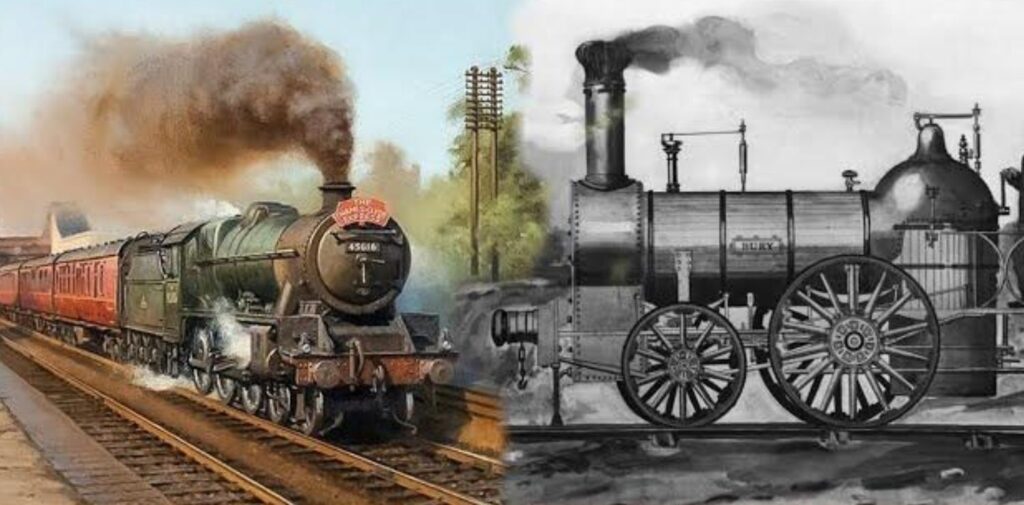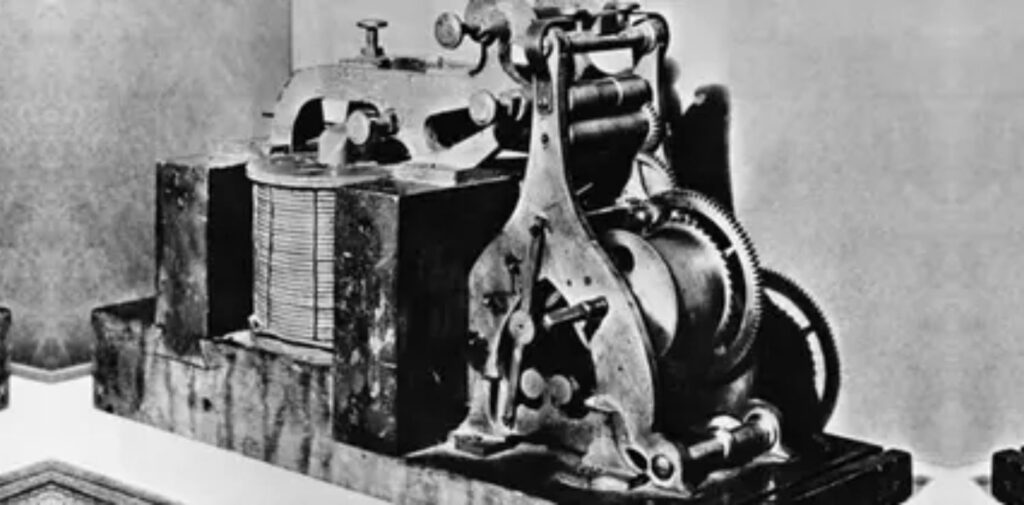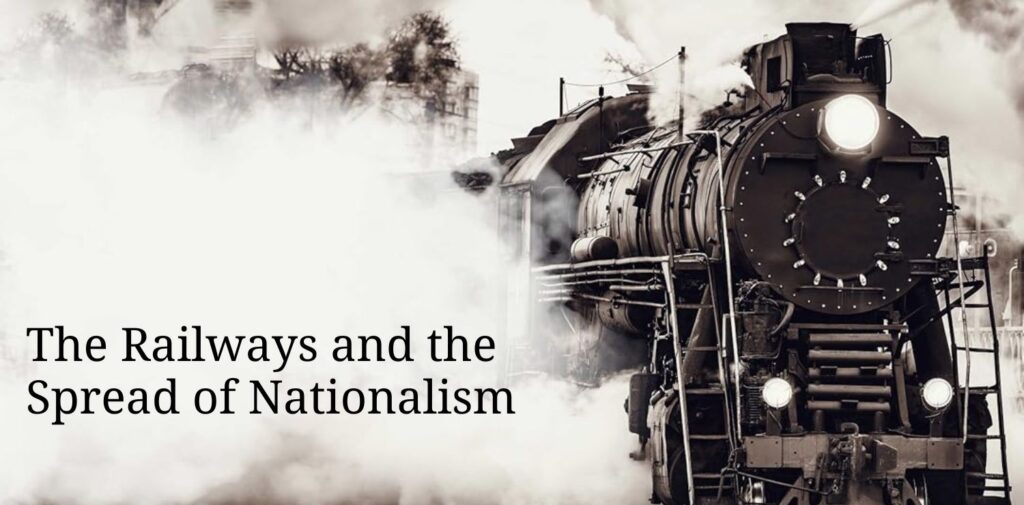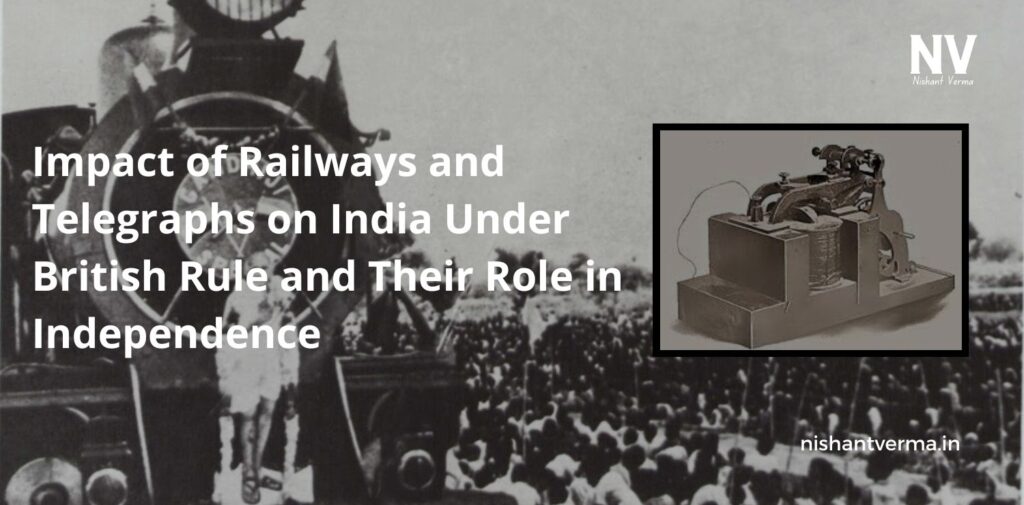The introduction of railways and telegraphs in India during British colonial rule had a profound impact on the country. These two forms of modern infrastructure played a significant role in the British administration of India, reshaping the economy, society, and even the political landscape. At first, they were primarily designed to serve the interests of the British rulers, but over time, they became crucial tools for the Indian independence movement. This article will explore how the railways and telegraphs affected India and how they ultimately contributed to the country’s struggle for freedom.
Introduction of Railways in India
The Beginning of Railways
The British introduced railways in India in the mid-19th century. The first railway line, which ran from Bombay (now Mumbai) to Thane, was opened in 1853. This was the beginning of a vast network that would eventually stretch across the entire subcontinent. By 1947, when India gained independence, India had one of the largest railway networks in the world.
Benefits to the British Empire
The primary purpose of the railway system was to benefit the British Empire. It helped in transporting raw materials like cotton, tea, and coal from the Indian hinterland to the ports for shipment to Britain. The railways also allowed British goods to be distributed across India, helping British businesses to establish control over the Indian economy. This made the British more powerful economically, as it enabled them to easily control trade and industry.
Moreover, the railways were essential for the movement of British troops and military supplies. India was a strategic colony for the British Empire, and the railways made it easier to manage and control the vast territory, especially in times of rebellion or unrest.
Impact on Indian Society and Economy
The railways had a significant impact on the Indian society and economy. For the Indian people, the railways made travel easier and faster. They allowed people to move from one region to another, breaking the isolation of rural areas and enabling communication between distant parts of the country. This led to greater social mobility and increased contact between different cultures and communities.
Economically, the railways facilitated trade within India and with the outside world. Farmers could now send their crops to markets in far-off cities, and merchants could trade goods more easily across regions. However, this also meant that the British could transport Indian resources to Britain more efficiently, often at the expense of local industries. Many traditional Indian industries, such as handicrafts and textiles, were destroyed because British goods, which were cheaper and more efficiently produced, flooded the Indian markets.
In the long run, while the railways contributed to economic growth in some sectors, they were also a tool of exploitation, serving the interests of the British rulers.

The Introduction of Telegraphs in India
The Early Days of Telegraphy
The telegraph was introduced in India in the 1850s, around the same time as the railways. The first telegraph line in India was established between Calcutta (now Kolkata) and Bombay in 1854. The telegraph allowed messages to be sent over long distances almost instantly, which was a major leap forward from the slow and unreliable methods of communication that existed before.
British Control and Communication
The British used the telegraph to strengthen their control over India. It allowed them to communicate quickly across the vast territory, enabling them to manage administrative functions and respond rapidly to events like uprisings or natural disasters. The telegraph was a powerful tool of centralization, making it easier for the British government to control a large and diverse country like India.
The telegraph also played a key role in the coordination of British military operations, enabling faster communication between military commanders, which was crucial in maintaining law and order and suppressing resistance.
Impact on Indian Society
The telegraph, like the railways, had both positive and negative effects on Indian society. On one hand, it improved communication and made it easier for people to send messages across long distances. For example, it helped people in remote areas to communicate with their families and friends in other parts of the country.
However, the telegraph also contributed to the control and surveillance of the Indian population. The British government could now intercept communications, monitor political activity, and suppress movements that were seen as a threat to their rule. The telegraph was a tool of control that kept the British government closely connected to its colonial officials in India.

Role of Railways and Telegraphs in the Independence Movement
Although the British introduced railways and telegraphs to consolidate their control over India, these technologies would eventually become important instruments in India’s struggle for independence. Both the railways and telegraphs played a role in the way Indians organized and communicated during the independence movement.
The Railways and the Spread of Nationalism
The railways made it easier for people from different parts of India to meet and exchange ideas. Before the introduction of railways, India was a country of isolated regions, each with its own distinct culture and language. The railways, however, helped bring people from diverse backgrounds together, leading to the development of a pan-Indian identity.
One of the most significant effects of the railways was that they allowed nationalist leaders to travel across India more easily. Leaders like Mahatma Gandhi, Jawaharlal Nehru, and Subhas Chandra Bose used the railways to travel and meet people in different regions, spreading the message of independence. The railways also allowed the leaders of the Indian National Congress (INC) to hold large meetings and conferences, where they could discuss strategies for gaining independence from British rule.

The Telegraph and Political Coordination
Similarly, the telegraph became an important tool for political communication and coordination among nationalist leaders. During key moments in the independence movement, such as the non-cooperation movement, the Salt March, and the Quit India Movement, the telegraph was used to send messages between leaders and groups across the country. This helped keep the movement unified and coordinated, even though India was vast and communication was often difficult.
Moreover, the British themselves realized the potential of the telegraph in the hands of the Indian nationalists. The telegraph was used by revolutionaries like Subhas Chandra Bose to communicate with other countries, seeking support for India’s independence. The speed of communication, however, worked both ways, and the British authorities used it to suppress revolutionary activities by intercepting and censoring messages.
The Contribution to Independence
The railways and telegraphs helped create a more interconnected India, both physically and politically. The ability to travel and communicate over long distances facilitated the spread of nationalist ideas, enabling people across India to unite for a common cause.
While the British initially used these technologies to strengthen their colonial control, they ultimately became tools of resistance. The railways, which were built to move British goods and troops, were also used by nationalist leaders to mobilize the masses. The telegraph, which had been a tool of British surveillance, was used by Indian revolutionaries to coordinate their efforts against the British.
These technologies thus played a double role. While they were initially used for exploitation and control, they later became part of the struggle for freedom, helping to unite Indians across regions and providing a means of communication that was vital to the independence movement.
Conclusion
The railways and telegraphs had a lasting impact on India during British rule. They were originally introduced to facilitate British control, but they also contributed to the growth of Indian nationalism. The ability to travel across the country and communicate rapidly helped unite people from different regions and communities, laying the foundation for the independence movement.
By the time India gained independence in 1947, the railways and telegraphs had played an important role in shaping the country’s political landscape. They had been instrumental in the spread of ideas and in the organization of movements that ultimately led to the end of British colonial rule. Despite their initial purpose to benefit the British Empire, these technologies helped India unite in its fight for freedom and independence.




